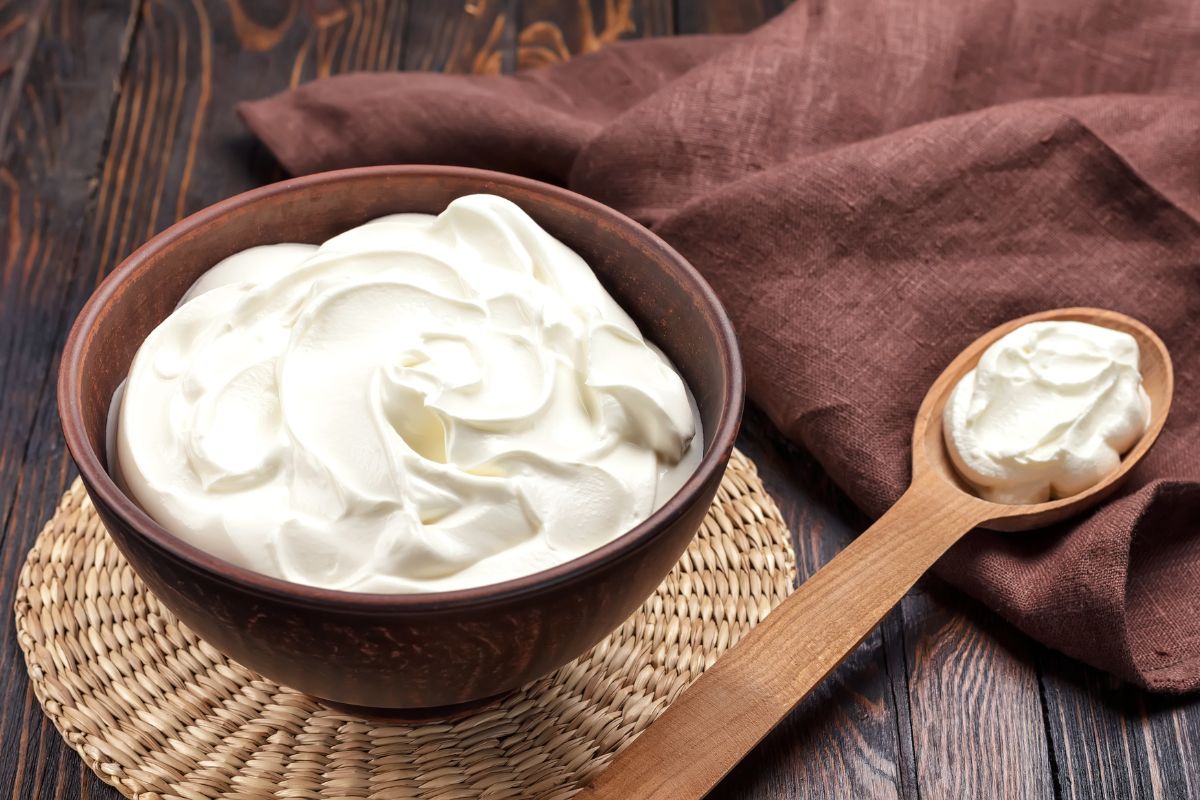Sour cream is a versatile topping that you can use on everything from your baked potato to tacos. It even tastes delicious on leftovers.
But what happens when you have to reheat your leftovers and there’s sour cream mixed into the dish? Can you stick your sour cream in the microwave along with everything else?
You can microwave sour cream as long as you take it out of the original container and put it in a microwave-safe dish or microwave it along with leftovers. You also need to carefully watch how long you microwave the sour cream according to the fat content.

Why Would You Want To Microwave Sour Cream?
You may be wondering why someone would microwave sour cream in the first place. After all, this condiment is delicious when served cold!
Often, the answer is convenience. If you have leftovers that are already covered in sour cream, such as a baked potato, you probably don’t want to waste time scraping off the sour cream before reheating your food. Some people also like to microwave sour cream to make it easier to mix it with other ingredients and make a dip.
Which Container Should You Use To Microwave Sour Cream?
The most important thing when microwaving sour cream is safety. You never want to microwave using the original container. Sour cream is usually sold in plastic containers, which have harmful chemicals that may release into your food when heated.
Transfer the sour cream to a microwave-safe dish. Usually, dishes will have a stamp on the bottom that indicates whether or not they are microwave-safe.
You can also microwave sour cream directly on your leftovers, but be careful as it might make your burrito soggy as it melts.
Why Does Fat Content Matter?
Before microwaving your sour cream, be sure that you know the fat content. Full-fat sour cream works best in a microwave, while low-fat or fat-free sour cream does not. You can still microwave lower-fat sour creams, but it is far more likely that the condiment will curdle.
The most common problem when microwaving sour cream is curdling. Curdling means that the sour cream has separated into liquid and solids. You will recognize that the sour cream curdled if you see little solid balls in the mixture. While curdling does not make sour cream unsafe to eat, it does make the eating experience unpleasant.
Non-fat sour creams are more prone to curdling when exposed to heat. That’s because fat is an important component in holding the sour cream together. While you can still microwave non-fat sour cream, you will need to keep a closer eye on it to prevent curdling.

Best Practices for Microwaving Sour Cream
Microwaving sour cream is a delicate practice because you don’t want it to accidentally curdle. Here are some tips to get you started:
- Once you take the sour cream out of its original container, make sure that you are only microwaving a little bit at a time. Smaller amounts of sour cream give you more control over the temperature, while larger amounts will curdle more easily if you don’t keep a close eye on it. Start out with just a few tablespoons.
- Before starting the microwave, make sure that your sour cream is covered. You can use a microwave-safe lid or a regular damp paper towel. Sour cream is prone to splattering, and you don’t want to make a mess of your appliance.
- Microwave your sour cream for 15 seconds per tablespoon of sour cream (you can do 20 seconds if you are using medium or low heat). Take it out to check if it has reheated properly and reheat only if necessary. Before putting it back in the microwave, stir the sour cream to evenly distribute the heat.
Go Ahead and Heat Up Those Leftovers!
While sour cream is best served cold, if you have to microwave leftovers that have been mixed with sour cream, you don’t have to worry about separating the sour cream because it is safe to microwave. If you are microwaving sour cream on its own, put it in a covered, microwave-safe container and heat it for short periods of time.
